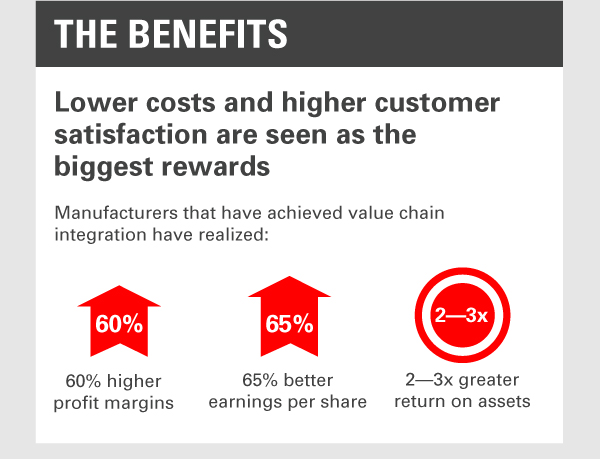Transforming Supply Chains for Superior Performance

Companies are looking to gain sustainable advantage and drive innovation by transforming their traditional supply chains into integrated value chains.
The notion of value chain transformation gained widespread currency after author and Harvard Business School Professor Michael E. Porter coined the term in his seminal 1985 book, Competitive Advantage: Creating and Sustaining Superior Performance. Porter’s idea was that companies should operate as more than isolated collections of people, resources, equipment, and functions, each independently pursuing its own activities and goals.
Instead, Porter said, companies could gain sustainable competitive advantage by transforming their traditional supply chains into value chains, in which the supply chain is seen as one integrated piece of a broader set of processes that add value through each phase of the product lifecycle.
Whereas traditional supply chains are optimized around the transactions that enable the efficient flow of physical supplies and products and also reduce costs, value chains emphasize the enhancement of customer and enterprise value. That enhanced Transforming Traditional Supply Chains To Achieve Superior Financial Performance Value Chain Innovation value is typically achieved through business strategy alignment and tight collaboration between the supply chain team and other functions such as new product development, engineering, production, quality, supply chain, and service management inside the enterprise, and suppliers, customers, and partners on the outside.







Article Topics
Oracle News & Resources
Future-proofing with warehouse management systems (WMS) Enterprise Resource Planning Gains Ground Into the Supply Chain Management Sector The CFO’s Guide to Planning and Analysis The 7 Habits of Highly Effective CFOs Oracle introduces new capabilities for its Oracle Fusion Cloud SCM offering The 80/20 CFO Supply Chain Management (SCM) Software Update: SCM keeps the supply chain wheels turning More OracleLatest in Supply Chain
U.S. Manufacturing Gains Momentum After Another Strong Month Biden Gives Samsung $6.4 Billion For Texas Semiconductor Plants Apple Overtaken as World’s Largest Phone Seller Frictionless Videocast: The Importance of Water at the U.S./Mexico Border with Commissioner Maria-Elena Giner, International Boundary and Water Commission Why are Diesel Prices Climbing Back Over $4 a Gallon? Walmart Unleashes Autonomous Lift Trucks at Four High-Tech DCs Plastic Pollution is a Problem Many Companies are Still Ignoring More Supply Chain












